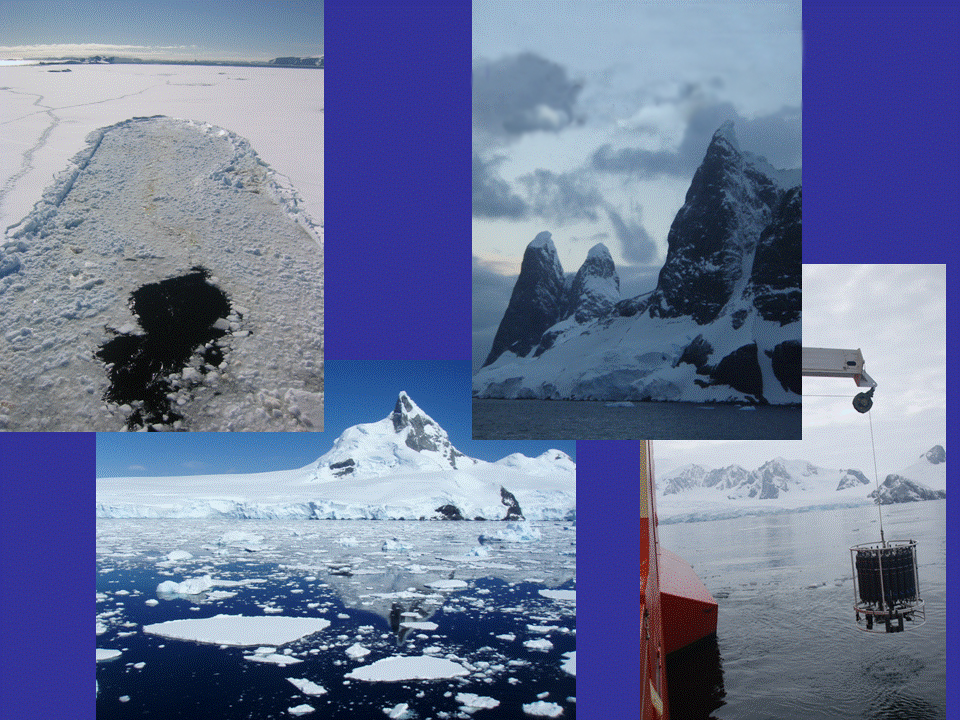Lemaire Straits, Science, Sun, & Icebreaking!
After one station within 45 kilometers of Palmer Station, our first full day of science (January 6th) began with the crossing of the Lemaire Straits very early in the morning. The strait is breath taking with high peaks thousands of feet in the air on either side of a narrow channel.
Later that morning, we deployed one of the instruments, the CTD or conductivity-temperature-depth instrument. The instrument is enclosed within a metal cage for protection. The CTD is lowered into the water with the help of a winch, measuring water conductivity and temperature as it is lowered. The conductivity gives us the salt content of the water. We fill its water bottles (also inside the cage) with sea water from various depths for study on the ship. It was a sunny and relatively warm day. We are slowly making our way south where we will cross -66º32’S, the Antarctic Circle, into the land of the midnight sun. South of this latitude, for at least one day each year, the sun does not set during the summer solstice (December 22) or does not rise during the winter solstice (June 21).
During the latter period of the winter, Antarctica nearly doubles in size due to the formation of sea ice. As the sea water freezes, salt is channeled out of the ice. In the spring when the ice melts, this fresh water is released onto the water surface, affecting the physical and biological characteristics of the Southern Ocean. The sea ice that day became so thick at one point that the ship had to back up, gather speed, and ram into the ice repeatedly to make a path for itself.

At top left, the camera sits on the bow of the L.M.Gould as the ship backs up and prepares to ram into the ice again. The green/brown colors in this photo are the flourishing algal plant communities incorporated into the ice. At bottom left, the sun illuminates the fields of ice in the water, revealing snowy peaks. At top right, the peaks of the Lemaire Straits rise majestically out of the water. At bottom right, the CTD is lowered into the water. The top right photo taken in the middle of the night contrasts nicely with the bottom left photo taken mid day – the light never fully fell from the sky.
This was a gorgeous day!










Cool blog! I love the topic of conversation!